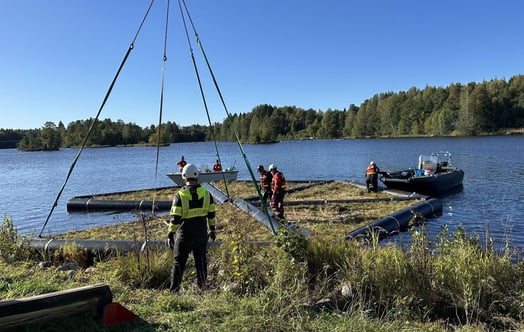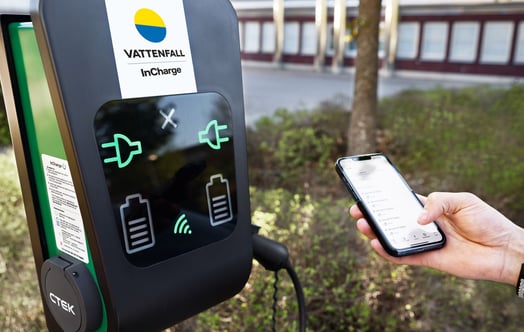
Vattenfall Solar Team reveals secret weapon: shark skin
Vattenfall Solar Team has fitted their car with a shark skin in their bid for an eight solar racing world title. The shark skin is a film layer with a very fine rib structure. These riblets cause the air to flow more smoothly over the car. The layer works like a second skin that makes NunaX even more aerodynamic than previous editions of the car. The team presented their secret weapon today during scrutineering – the official inspection of the solar car.
"We are very proud that we are able to use shark skin”, says Max van der Waals (22) aerodynamics expert of Vattenfall Solar Team. “We have been competing in this race for 20 years and this is the first solar car that uses this technology. Even regular cars hardly ever get to use it."
Tiny air ducts
The film layer is made up of tiny riblets, each the size of a hair, that channel the air as efficiently as possible along the car. The technology is inspired by the skin of a shark that slices through water partly thanks to the ridges on its skin.
Shark skin has previously been used on race planes, Olympic bobsleighs, and during the world's most prestigious sailing competition – the America's Cup. The skin can be recognised from the rainbow-like hue due to light refraction.
The shark skin is very delicate and must be handled carefully. Max adds "we applied the skin to NunaX just before inspection and nobody is allowed to touch it anymore. During the race we use special materials to keep the skin clean."
Propelled by the wind
Shark skin is not the only innovation Vattenfall Solar Team uses to make their tenth race participation a success. In addition to solar power NunaX alsouses the power of the wind. Parts of the car are designed to act like a sail, enabling the car to use wind to its advantage.
The race
In less than a week from now, on 13 October, the teams participating in the Bridgestone World Solar Challenge will set off on the 3,000-kilometre, multi-day race through the Australian outback. A total of 53 teams from 24 countries are taking part in the race. Of these, 30 teams are in the Challenger class and 23 in the Cruiser class. The aim of the race is to push the limits of technology and promote the use of sustainable energy.
Facts and figures
About the car
- NunaX is the smallest and lightest (131.6 kg) Nuna ever to participate in the solar race.
- To save weight, every part of the car has been redesigned. For some parts they switched to different materials, for others they scrapped some material. In some cases the difference is only two grams, yet every gram counts.
- The car is highly streamlined – the wing mirror of a normal passenger car has the same wind resistance as the NunaX.
- The solar panel consists of gallium solar cells, which are normally used in the aerospace industry. They are much more efficient than the silicon cells on building roofs.
- Instead of the customary layer of glass normally used to protect solar cells, the team is applying its own protective coating to save weight. The coating contains prisms so that light shining on the solar cells is always perpendicular.
About the race
- In October of this year, the Vattenfall Solar Team from the Delft University of Technology will participate in the Bridgestone World Solar Challenge in Australia – the world championship of solar racing – for the tenth time. This race takes place every two years.
- The Bridgestone World Solar Challenge is a multi-day race over a 3,000 kilometre course through the Australian outback. Solar racing teams from all over the world participate and try to reach the finish as fast as possible.
- The TU Delft team has already won the race in Australia seven times. On two occasions they finished second. The team also won the Sasol Solar Challenge in South Africa three times.
About the team
- Every two years a new Vattenfall Solar Team composed of 16 ambitious students from the Delft University of Technology is assembled, and they design and build the car and then race it.
- The team members pause their studies for at least 18 months to participate in the Bridgestone World Solar Challenge.
- The team has been sponsored by Vattenfall right from the start. Vattenfall aims to make fossil-free living possible within one generation, and the Vattenfall Solar Team shows that this is possible.



